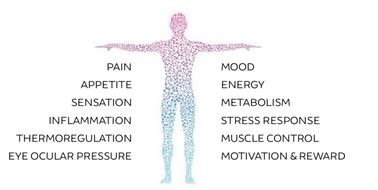Magu the Hemp Goddess
Cannabis was highly valued by Daoists in East Asia where it was associated with Magu, the hemp goddess. It has been part of medicinal and spiritual practice throughout history, with its first documented use as a medicinal in 2737 BC by the Chinese emperor Shen Nung, and the earliest direct evidence of Cannabis being used as a psychotomimetic discovered in a 2,500-year-old cemetery in Central Asia. In his book, Cannabis a History, Martin Booth tells this delightful tale, “Once upon a time, according to a story recounted by the Islamic chronicler al-Maqrizi (1364-1442), in 1155 the founder of the Persian Sufi Hyderi sect, Haydar, left his cell in a monastery in the mountains near Neyshaur in the Khorasan region of north-eastern Iran and went out for a walk. Discovering a plant standing unwithered by the blazing sun, he grew curious and wondered how it withstood the desiccating heat, so he cut a few leaves and chewed on them as he went on his way. Usually a taciturn man, he returned in a fickle frame of mind with a smile on his face. Swearing his fellow monks to secrecy, he told them what he had discovered. Thereafter, it is said, he remained in a capricious mood until his death sixty-six years later. What he had purportedly discovered was a drug from a common plant. The plant was Cannabis.”
Nowadays, the story of Cannabis, aka marijuana, has taken a distinctly modern turn driven by intense interest in the biology of neurotransmitters. By now just about everyone knows that marijuana mimics, to a degree, native neurotransmitters that collectively go by the unwieldly name ‘endocannabinoids’, or eCBs. The new science of eCBs is well worth looking into, and I find that a little knowledge about them helps explain many of the effects of marijuana, and visa versa.
The first endocannabinoid was found in 1992 and named anandamide or AEA, ānanda means ‘bliss, joy, delight’ in Sanskrit. The same researchers isolated tetrahydrocannabinol, THC, in 1964. The eCB family has several members, but the two we know best are AEA, and 2-AG. These two, together with their retinue of membrane receptors, synthesis and removal enzymes, form the endocannobinoid system. eCBs are the most widely distributed neurotransmitters in the brain, a testament to their importance. What’s more, the Cannabis product, THC, and the transmitter, AEA, are remarkably similar in the chemical sense. It is reasonable to assume that the plant evolved to make THC, CBD and the other phytocannabinoids to discourage animals from eating it. Poppies, Jimson Week, coca, mushrooms, ayahuasca (chacruna), and many others evolved different chemical strategies toward the same end, well known botanical trickery that can sometimes yield useful medicines. For Cannabis, this has blossomed into a multibillion dollar industry.
The eCB system is old, evolving ~ 600 million years ago, and we share it with most of the animal kingdom; mammals, birds, amphibians, fish, and even sea urchins and clams, but not insects. In us, endocannabinoids and their receptors are found in many places; nervous system, internal organs, connective tissues, glands, and immune cells, for example. Their distribution suggests that they play a global role in maintaining a sort of equilibrium in the mind–body relationship. The thinking goes like this; when bodily and cognitive processes are functioning correctly we are in balance. However, when imbalance occurs the endocannabinoid system is positioned to help straighten things out.
eCBs influence a host of processes; sleep, appetite, digestion, inflammation, pain, the response to stress, body temperature, mood, learning, and memory, to name a few. Clearly, a deep understanding of endocannabinoids would be very worthwhile.

AEA and 2-AG are neurotransmitters. They interact with specific receptor proteins expressed on cells in the brain and body. In the brain, AEA regulates synaptic neurotransmission by acting directly on neurons at synaptic terminals to inhibit the release of transmitters like glutamate, dopamine, GABA, serotonin, etc. In this way, AEA exerts a broadly distributed, controlling influence over numerous signaling pathways in the brain. They are lipid molecules that are synthesized from precursor molecules in cell membranes. Once produced at a synapse, they enter the space between sending and receiving neurons where they bind to and activate receptors located on the presynaptic membrane. This initiates a well-known molecular cascade that inhibits neurotransmission at that synapse. It is a local action, carried out at individual synapses and in that sense its effect can be discreetly focused. Importantly, it is the pattern of expression of the receptors in different regions of the brain that gives specificity to the actions of the eCB system.
Cannabinoid receptors
The story of Cannabis and anandamide revolves around a pair of transmitter receptor proteins called CBR1 and CBR2. CBR1 is the most abundant receptor of its type in the brain. To put it simply, it is everywhere and that means the effects of eCBs and TCH are everywhere, too.
For those interested in anatomy, CBR1 receptors are particularly enriched in cortex, hippocampus, amygdala, basal ganglia, and cerebellum, a distribution that makes a lot of sense considering the well-known effects of Cannabis. CBR2 expression is different, it is found in the immune system and regulates immune function in the spleen, thymus, tonsils, circulating immune cells, and brain microglea.
CBR1 is where endocannabinoids and Cannabis converge; AEA and THC from marijuana both activate CBR1 receptors. The current thought is that CBR1 is responsible for the psychoactive effects of marijuana. Of course, this begs the question, what are the psychoactive effects of AEA, a natural high? Maybe. The other prominent plant cannabinoid, CBD, does not bind CBR1 or CBR2 at all, which probably explains why it lacks most of the neurotrophic effects of THC, including the tendency toward addiction.
It is axiomatic that the more you look the more you find, and we know now that the eCB system has targets beyond the CBRs involving additional receptor classes, ion channels and gene expression cascades. This is an evolving story, but one thing is clear, endocannabinoids have a hand in an enormous number of brain and body functions.
Endocannabinoids and Sleep
These days, it seems that every conversation about sleep turns to THC and CBD as sleep aids. What do the endocannabinoids have to say about it? Unfortunately, what we know so far is deliriously ambiguous. It is well accepted that THC promotes sleep. And, we know for sure that direct pharmacological activation of CBR1 receptors induces sleep in lab animals and that inhibitors of CBR1 disrupt sleep in mice. Both AEA and THC bind and activate CBR1 receptors, ergo endocannabinoids modulate sleep the same way that THC does. Right? Not so fast. THC and AEA do not activate the receptor in the same way, TCH is a partial agonist, meaning it binds weakly, while AEA binds strongly. This means that the response to the two could be very different. It also sets up a situation where THC can actually decrease the effectiveness of endogenous AEA on sleep by competing for the receptors. It has also been demonstrated that too much THC, taken too often can make falling asleep more difficult. Welcome to the world of pharmacology where things are not always what they seem.
Also, CBR1 receptors are found throughout the brain and body while it is known that natural sleep is regulation by specific neural networks in the hypothalamus and brain stem. If eCBs in the brain modulate sleep, what are they doing at all those other locations? Its possible that both eCBs and THC influence sleep by reducing anxiety, promoting relaxation, calming the digestive system, and who knows what else.
We often think of sleep as cycling between two phases; rapid-eye-movement (REM) sleep characterized by awake-like brain activity and dreaming, and slow-wave or deep sleep (SWS) without dreaming (non-REM sleep). This is a useful rubric when trying to link the eCB system to the effects of Cannabis.
Cannabis promotes sleep, no doubt. THC shortens the time for sleep onset and decreases waking once you are asleep. It also influences the type of sleep. With pot and THC, SWS is increased and REM is decreased. In other words, deep sleep is favored over dream time; something you might consider when choosing a sleep aid. This helps explain the well-known marijuana hangover some people experience on waking. It is also true that repeated exposure to Cannabis or THC produces tolerance; you need more to obtain the sleep-promoting effect. Neither of these things apply to natural sleep, and neither apply to CBD. Remember, CBD does not interact with CBDR1 or CBDR2 so there is no cross-over with THC. Nevertheless, CBD has a strong following as a sleep aid, and we need some way to rationalize its relationship with sleep. The general thought is that THC increases sedation while CBD has opposing, wake-enhancing effects. Of course, this is bound to be quite a bit more complicated once the whole story is known. A study that caught my attention used equal amounts (~2 mg) of THC plus CBD. It was found that people with pain-related sleep disturbance enjoyed better sleep with no evidence of tolerance to the drug combo.
Here is how I understand it; the natural neurotransmitter anandamide (AEA) is normally broken down rapidly by an enzyme that terminates its action at synapses. CBD is known to block that enzyme. As a result, when CBD is present, AEA reach a higher concentration for a longer time. My idea is that CBD augments AEA’s effect allowing us to relax more deeply and experience less stress so we can fall sleep more easily. Accordingly, CBD works as a sleep aid because it enhances natural sleep promoted by AEA. I like this idea, but of course it needs testing.
eCBs and circadian rhythm
Circadian rhythm refers to the 24hr daily cycle of metabolism, most notably the cycle of sleep and wakefulness. The concentration of endocannaboids in the blood undergoes a daily rhythm, too; highest on waking and lowest just before sleep onset. Also, the circadian sleep rhythm is disrupted when CBR1 receptors are blocked by an inhibitor. Taken together, this is pretty good evidence that the eCB system contributes to sleep stability. As suggestive as is, there is a problem when trying to understand the role the eCB system plays in sleep when most of what we know comes from animal studies. Plus, many of the studies use THC as a proxy for the natural transmitter. That’s great, but we do not sleep the way rats do, our systems are substantially different, and THC does not engage the full spectrum of eCB actions.
There are very clear differences between natural sleep and sleep modulated by THC and CBD. Sharon Sznitman at University of Haifa has this to say, “Cannabis may improve overall sleep in the short term.” But, “… individuals who had more frequent use also had poorer sleep in the long term.” In other words, we develop tolerance, characteristic of addiction, to pot but we don’t develop tolerance to natural sleep. Cannabis use before bedtime reduces the time spent in REM. This also does not happen with natural sleep. Clearly, we have a ways to go before we understand the relationship of cannabinoids to sleep, whether they be endocannabinoids or marijuana products.
eCBs in pleasure and reward
It is more than curious that endocannabinoids are active in areas of the brain that are heavily involved in pleasure and reward. Anandamide (AEA) activates brain reward circuitry in a way that reinforce behavior all on its own, for example by enhancing desire for pleasurable food as well as strengthening the addictive nature of drugs like alcohol, opium, cocaine, and even marijuana. CBR1 receptors are prominent throughout pleasure/reward centers in the limbic system, amygdala and nucleus accumbens in particular. These areas are involved in addictive behavior and loaded with dopamine neurons. A shared feature of most drugs of abuse is their ability to activate dopamine neurotransmission, resulting in increased concentrations of dopamine (DA) in nucleus accumbens. Moreover, natural rewards like tasty food also increase DA release in the accumbens. So, it appears likely that endocannabinoids act to modulate dopamine signaling in pleasure pathways. The possibility that some of the mysterious effects of marijana may involve our pleasure and reward systems raises some questions. People on pot sometimes feel euphoric, where does that come from? Other people experience a kind of paranoia. Nobody knows exactly what this is about either, but the current notion is that it has something to do with the balance between dopamine and serotonin, perhaps at multiple places in the brain.
eCBs, the brain’s immune system, and inflammation
The endocannabinoid system regulates immune responses in the brain at several points to influence the activation of microglial, the prominent immune cell in brain. This is important because neuroinflammation due to overzealous microglia in response to infection, disease, injury, or stress, can permanently damage nerve cells causing neurodegeneration with bad outcomes. Endocannabinnoids lower potentially damaging immune responses by inhibiting the release of immune activators, and this is a direct result of AEA and 2AB acting through both CBR1 and CBR2 receptors on microglial cells. THC appears to have a similar neuroprotective effect. These findings are new but very encouraging because they open a path to new therapies for managing neurodegeneration.
eCBs in control of pain
Another thing attracting attention is the role of endocannabinoid receptors in modulating pain. In fact, one of the first medical uses of THC was to treat the discomfort of chemotherapy. There is an area in the midbrain called the PAG that produces profound pain suppression when its active. Injecting either opioids or endocannabinoids into the PAG blocks pain. That is an important finding, and its supported by the fact that direct pharmacological activation of CBR1 receptors in the PAG enhances pain suppression by opioids. It appears there is a direct relationship between CBR1 receptors and opioid receptors in normal pain management systems in the midbrain.
Central pain is caused by a sort of malfunction in the pain signals making their way to the brain. We know from all kinds of work that inhibition of neurotransmitters plus activation of potassium ion channels and MAP kinase are three specific actions that contribute to pain relief. These are exactly the things that eCBs and THC do through the CBR1 receptor; both appear to relieve pain by weakening the strength of pain signals in the spinal cord and their processing by the brain.
Although we have covered a lot of ground, there is vastly more to learn about the eCB system. What fascinates me is that eCB signaling has tendrils that extend beyond the brain and immune system into just about every organ. Their role seems universal, and I find it remarkable that Cannibus contrived to mimic one of our body’s own signals so well and at so many levels.
Magu the hemp goddess was sure onto something big.

– neuromavin


